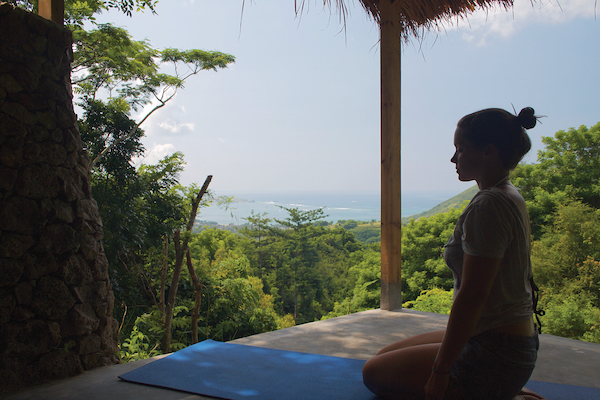For as long as I can remember, there’s been a raucous dialogue in my head. Do this. Definitely don’t do that. Is that thing I said okay? Do they like me? I should go pet that dog. Where did that hair tie go? Am I late? Are there waves? I’m hungry. No, anxious.
For a long time, I let this deluge of thoughts run the show. When it got too loud, I got louder. Work out, talk with friends, turn up the music, distract. Around my 25th birthday, I decided to do something else with this incessant chatter.
I wanted to have a talk. Not drown out, but listen, so that maybe it wouldn’t be so loud in there. After researching meditation centers, I decided on Dhamma Vipassana. One of the oldest traditions, dating back to before the time of Buddha Gotama (the one everyone refers to, serenely sitting cross-legged by a tree). Apparently, this was the style of meditation he used, too. I figured if it was good enough for the enlightened one, it was good enough for me.
For students new to the tradition, there is only one way in: a 10-day course at a Dhamma Vipassana center. In silence. Not just verbal silence, but what is referred to as Noble Silence. No hand gestures, no eye contact, no words, no music, no writing, no reading. This sounded terrifying. I applied.

I went to the center in Java, Indonesia. I never refer to this time in my life as a “retreat.” It was a long and exhausting marathon of my internal landscape.
My experience with meditation before Vipassana had included flowery language, cosmic comparisons, and visualizing. Not so here. The approach was non-dogmatic, free from esoteric psychobabble. The credo? Everything changes. Develop equanimity of the mind.
On the fifth day, we were introduced to adhittana, which translates as “seat of determination.” Up until now, we had been learning to sit and meditate at length, but with the freedom to move and change position. Adhittana asks us to be absolutely still for an entire hour. This upended any idea I had ever had about what was difficult.
Seated, I could not focus on anything but the pain I felt up the backs of my legs. Real or imagined? I didn’t know. Back to the breath. Watching it move in the nostrils, feeling it move out. Itch on my nose. Don’t scratch it. Back to the breath. Why is it still itchy? Back to the breath. My mind flitted from technique to terror. Years of yoga taught me to move my body when I felt discomfort. Adhittana was training me to be with discomfort. Befriend it. Notice its everchanging quality. Be aware of how my suffering was caused by my desire to avoid it. It will eventually change.
There were times when I was surprised by the entertainment my own mind spun. The voice that used to plague me was my newly anointed Hollywood mind-movie director. I went on rides through my imagination. I relived painful emotional experiences. I wanted to scream, laugh, ask if anyone else hated the sound of the morning bell. I crafted identities for the people around me, their accents and their stories.
It was all infinitely harder than I had anticipated. I wish everyone had the opportunity to get this close to themselves.
Technically speaking, we do. If you can carve out 10 days in your calendar and apply for a course, everything else is taken care of. Vipassana centers are run on a donation-only basis and are free of charge to anyone who wants to attend.
As for my internal voice, she’s all right. Sometimes we disagree on things, but I’m the director now.
